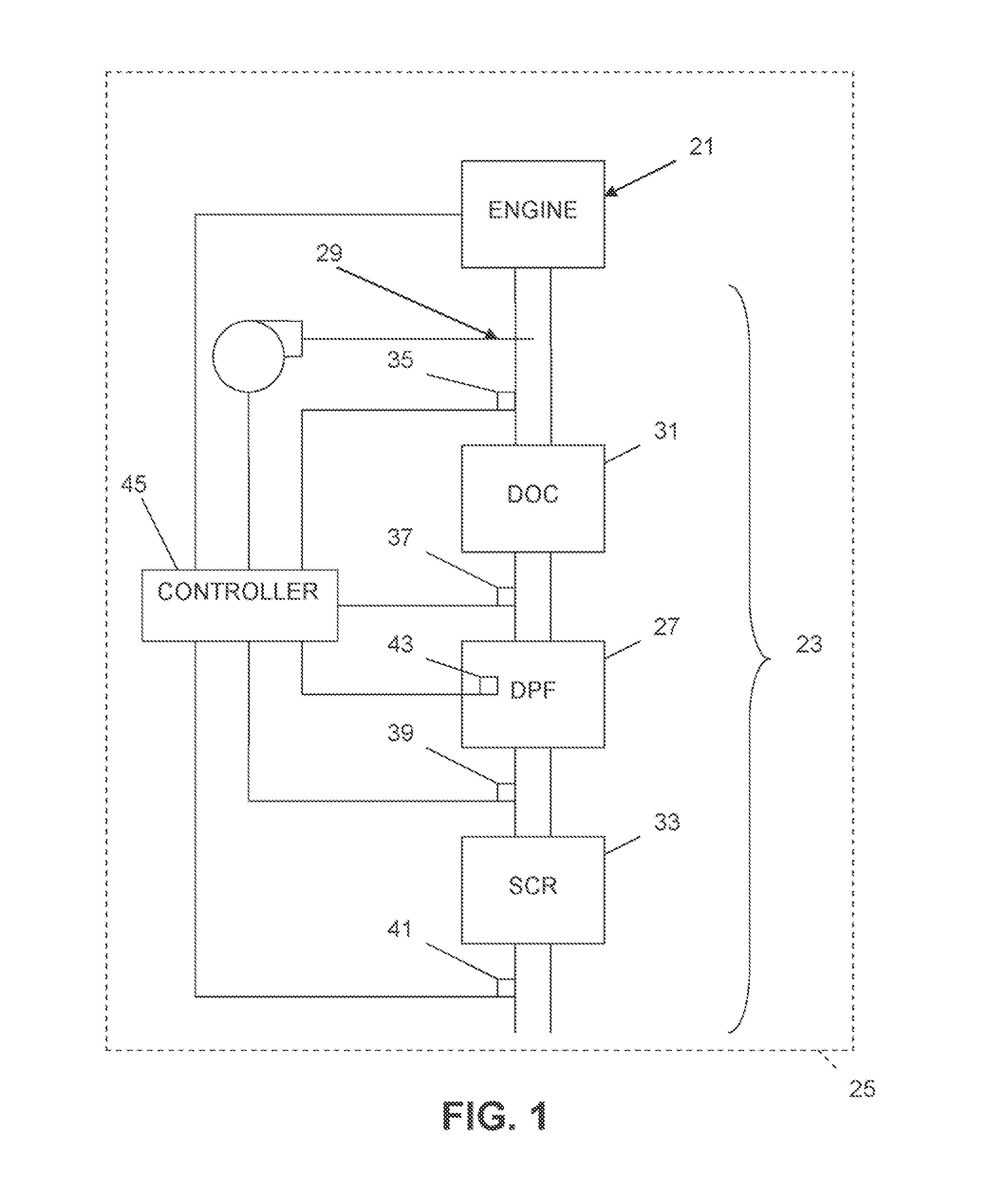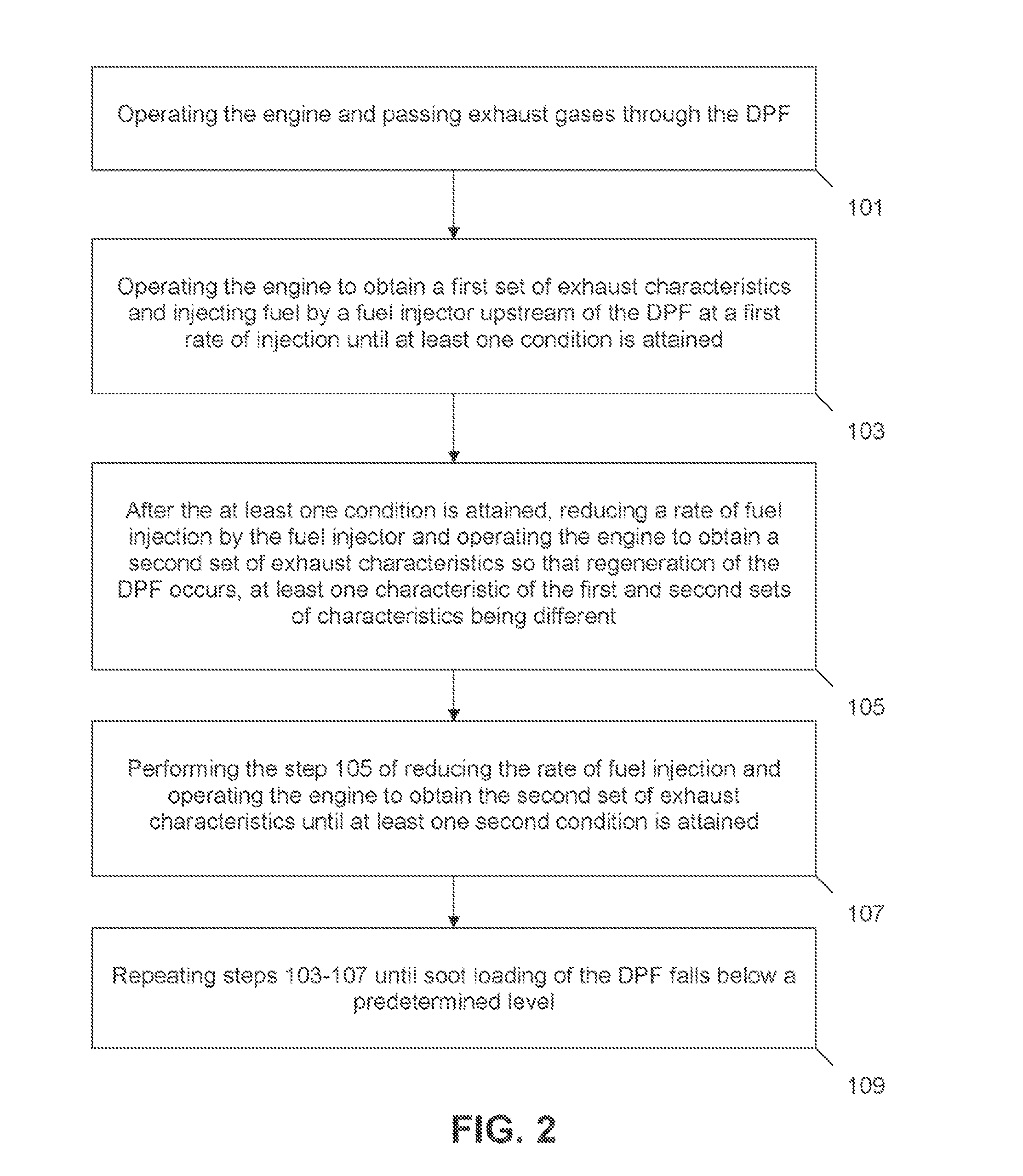Diesel engine and exhaust aftertreatment system and method of treating exhaust gases from a diesel engine
a diesel engine and exhaust aftertreatment technology, which is applied in the field of diesel engine exhaust aftertreatment system and the method of treating exhaust gases from diesel engines, can solve problems such as inhibiting no2 recycling, and achieve the effect of encouraging results
- Summary
- Abstract
- Description
- Claims
- Application Information
AI Technical Summary
Benefits of technology
Problems solved by technology
Method used
Image
Examples
Embodiment Construction
[0009]FIG. I shows a diesel engine 21 and exhaust aftertreatment system 23 (EATS) according to an aspect of the present invention that might be used in a variety of applications, particularly applications wherein the diesel engine is used to drive a vehicle 25 (shown schematically in phantom). While the present invention is considered to be particularly useful in vehicles such as trucks, it can be used in other types of vehicles, as well as in non-vehicular applications.
[0010]The diesel engine 21 is adapted to be operated to attain at least two different sets of exhaust characteristics. For example, by adjusting engine operating characteristics such as the timing of fuel injection, it is possible to change the NOx levels in and / or the temperature of the engine exhaust. It is also possible to adjust engine operating characteristics to obtain different exhaust mass flow rates, such as by changing engine speed or load, or closing a variable geometry turbocharger geometry. A variety of ...
PUM
 Login to View More
Login to View More Abstract
Description
Claims
Application Information
 Login to View More
Login to View More - R&D
- Intellectual Property
- Life Sciences
- Materials
- Tech Scout
- Unparalleled Data Quality
- Higher Quality Content
- 60% Fewer Hallucinations
Browse by: Latest US Patents, China's latest patents, Technical Efficacy Thesaurus, Application Domain, Technology Topic, Popular Technical Reports.
© 2025 PatSnap. All rights reserved.Legal|Privacy policy|Modern Slavery Act Transparency Statement|Sitemap|About US| Contact US: help@patsnap.com


